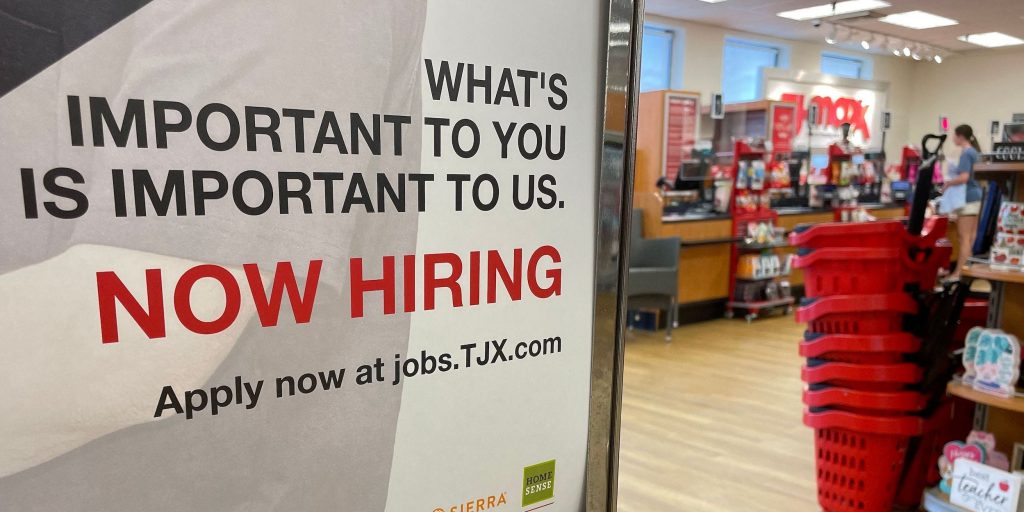- The US is just 524,000 payrolls away from returning to pre-pandemic employment levels.
- The economy is on track to recover all lost payrolls by the end of August, Insider calculates.
- While hiring has been uneven across industries, the current rebound is leagues faster than that seen after the Great Recession.
Hiring blew past economists' forecasts again in June, and the US is now within spitting distance of finishing its jobs recovery.
Data published Friday revealed the economy added 372,000 nonfarm payrolls in June, handily surpassing the average forecast of 268,000 new jobs. The unemployment rate held at a historically low 3.6% for the fourth month running and wages continued to tick higher at a healthy clip. Despite rising interest rates and waning consumer spending, companies are adding jobs at nearly twice the rate seen before the pandemic crash.
The economy is now just 524,000 payrolls away from the February 2020 peak. Should the current pace of job growth hold, the US will surpass its pre-crisis job count by the end of August. Job creation has held steady through much of the past year, even as the economy closes in on full employment.
The pace at which the US is still adding jobs is "truly remarkable," Daniel Zhao, a senior economist at Glassdoor, told Insider.
"It seems clear now that things haven't played out the way we were concerned that they might play out," Zhao said. "We saw many workers come back. We saw high demand for workers actually help promote wage growth and encourage workers to come back."
The payroll rebound mirrors the unemployment rate's extraordinarily quick recovery. The measure hit 3.6% in March and has stayed there since. That's just above the 50-year low of 3.5% observed just before the pandemic slammed the US.
The hiring rebound has been broadly superlative. The economy is just 0.3% down from the payroll count it boasted before the coronavirus recession started 28 months ago. By comparison, employment was down 5.6% in the same period after the Great Recession began. And while the current jobs recovery is expected to be completed in 30 months, it took 76 months for the labor market to fully heal from the 2008 crisis.
To be sure, a full payroll recovery doesn't necessarily mean the US labor market has fully healed. Labor force participation ticked lower in June and remains well below pre-crisis levels. That means there are still millions of Americans who were working before the pandemic and remain on the labor market's sidelines. Though retirements count for some of the trend, it doesn't explain the full decline. And with the labor shortage still running strong, the gap between worker supply and labor demand remains vast.
The recovery has also been uneven. Certain sectors, like professional and business services and retailers, tout payroll counts well above those seen in February 2020. Leisure and hospitality companies, however, are still down some 1.3 million jobs from the pre-pandemic peak after facing especially strong headwinds as the virus' spread and lockdowns crushed demand for in-person service providers like restaurants and bars.
The headline data suggests the labor market is nearly back to normal, but the picture looks very different depending on what pockets of the economy one focuses on.
Still, it can't be denied that the economic recovery has made extraordinarily large strides over the past two years. Hiring has held strong amid virus waves, elevated inflation, and soaring interest rates. And while some areas are far from a complete recovery, job creation is still running much faster than the pre-crisis trend.
"Overall, the recovery has been extremely impressive, especially given how severe the initial recession was," Zhao said.
